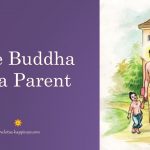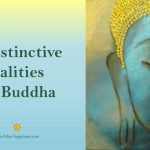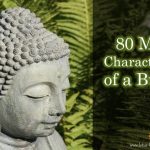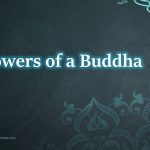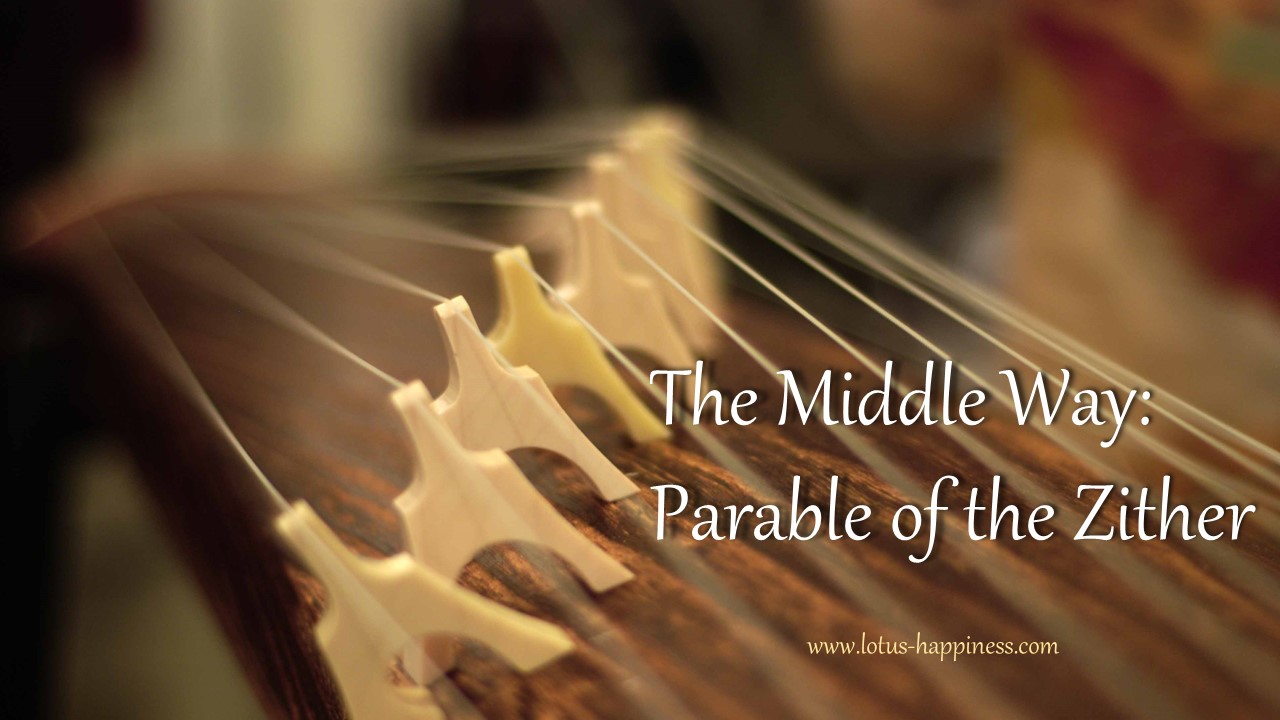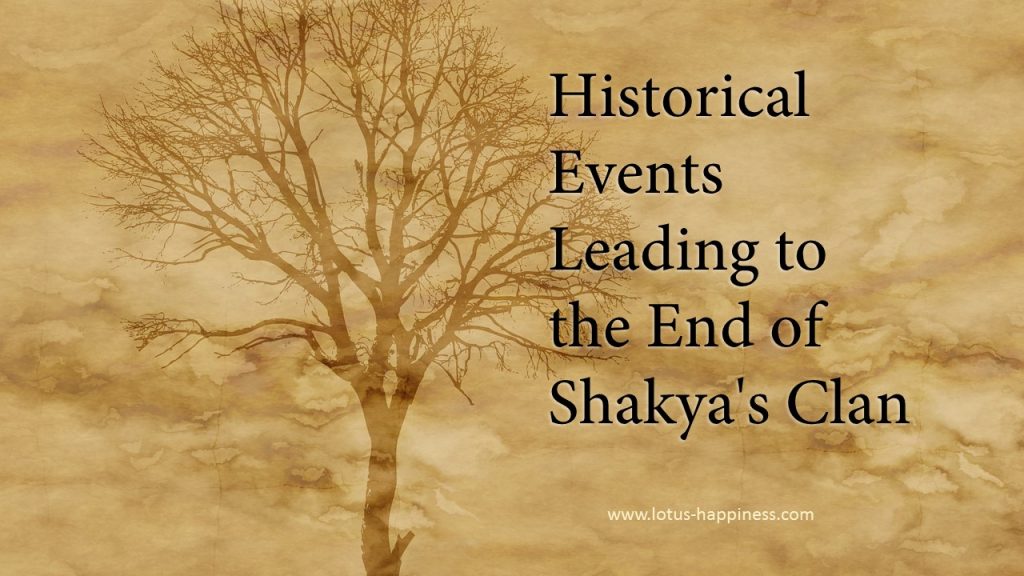
As a relatively young man of 35, the Buddha claimed that he had awakened to the truth and thus freed himself of the sufferings of old age, sickness, and death. The 80th year of the Buddha’s life, however, was filled with pain and tragedy, culminating in the Buddha’s own death. Was the Buddha wrong or deluded? Or did his awakening and liberation mean something other than a literal conquest of the inevitable sufferings of old age, sickness, death, and other natural and man-made calamities? This is the question to bear in mind in recounting the many trials and tragedies the Buddha met with as his life drew to a close.
The treachery of the Buddha’s cousin Devadatta and the palace coup in which the Buddha’s friend and supporter King Bimbisara was cruelly starved to death by his own son, Ajatashatru, has been told in a previous article. In the last year of the Buddha’s life, another coup occurred in Shravasti, the capital of Koshala, when Prince Virudhaka took the throne from his father King Prasenajit. The traditional accounts of what led to this event and what followed after is a story full of the worst aspects of human nature: pride, bigotry, paranoia, treachery, and bloody vendettas, all leading up to an act of genocide that even the Buddha found himself unable to prevent.
The story really begins during the early years of the Buddha’s teaching in Shravasti. As has been told before, the people of Shravasti were not immediately receptive to the Buddha’s teachings. Many of them were already partisans for one or another of the so-called six unorthod oxteachers who had rejected the authority of the Vedas and were teaching their own philosophies and methods for attaining liberation. Aside from King Prasenajit and Queen Mallika, there were many at the palace that only saw the Buddha as a rival to their own favored teacher and so were less than welcoming. For this reason, the Buddha and his disciples chose not to dine at the palace where they were not welcome, but would accept invitations to eat in the home of the wealthy merchant Sudatta or Visakha, the wife of the wealthy merchant Migara.
At one time, King Prasenajit asked the Buddha what the best food to offer would be. The Buddha responded that food offered in friendship was best. The king’s ministers, however, misinterpreted this to mean friendship such as one has with one’s family and clan. Hoping to make the palace seem more hospitable to the Buddha and the Sangha, King Prasenajit decided that he would try to become an in-law of the Buddha by asking the neighboring Shakya clan to send him one of their princesses to become his queen-consort. Since the Shakyas were also believed to be from an ancient lineage of nobles, this would have the added benefit of increasing King Prasenajit’s prestige and increasing ties between his kingdom and theirs. The irony of this is that Shakyamuni Buddha had long ago renounced all family ties when he left the palace to seek enlightenment.
The Shakyas, however, were too proud and fierce to permit one of their daughters to marry the “lowly” king of Koshala. They could not, however, openly defy King Prasenajit because Koshala was a much larger and more powerful kingdom that could easily crush them. So a Shakya noble named Mahanama proposed that his beautiful 16-year-old daughter, Vasabhakattiya, be sent. The girl’s mother was one of Mahanama’s slaves, a woman by the name of Nagamunda. Is it possible that Nagamunda was a member of the Nagas, a tribe of aborigines who even today live in northeastern India? In any case, Vasabhakattiya was regarded as no better than a slave herself, and slaves were not permitted to even eat out of the same dishes as the Shakya nobles.
The Koshalan emissary knew this, and so Mahanama arranged to make it seem as though he and his slave-daughter were eating from the same bowl by inviting her to dine with him in the presence of the emissary. Then, at the last moment, he arranged to be called away so that he would not have to eat anything from the bowl out of which Vasabhakattiya had eaten. The emissary did not catch on to the ruse and believed that the girl was, in fact, a Shakya princess. Though they regarded her as no more than chattel, the Shakyas saw her off with the ceremony due one of their actual princesses. When she arrived in Shravasti she was anointed the new queen-consort in a lavish ceremony. She soon became the king’s favorite among his many queens, and all the more when she gave birth to Virudhaka, the crown prince.
As Prince Virudhaka grew up he began to realize that his grandparents on his mother’s side in Kapilavastu never acknowledged him or sent him toys or other presents the way the maternal grandparents of the other princes did. His mother refused to speak of them and simply told him that they were too far away to send presents.
When Prince Virudhaka was 16 he insisted on visiting his grandparents and other relatives in Kapilavastu and would not be dissuaded. Vasabhakattiya sent a messenger ahead of the prince begging her former masters not to reveal the truth of Prince Virudhaka’s ancestry. For their part, the Shakyas were willing to cover up the truth, but not willing to have their children tainted by the presence of a slave’s son who mistakenly believed he was their equal.
They sent their princes off into the countryside where they would be out of the way. Prince Virudhaka stayed at a rest house that was prepared for him and was able to meet his grandfather Mahanama. He was treated in a civil fashion, if rather coolly.
It all fell apart when Prince Virudhaka left, for one of his entourage forgot his spear and ran back to the rest house for it. There the soldier saw the Shakya slaves cleaning all the furnishings that Prince Virudhaka had used. He asked them about it and found out that Prince Virudhaka was considered an outcast because his mother was in actuality a slave and not a princess. When this was reported back to Prince Virudhaka he was enraged. Even worse, when King Prasenajit found out, in order to protect himself from scandal, he had to strip Virudhaka and his mother of all rank and relegate them to the slave quarters.
Shortly thereafter, however, the Buddha spoke to King Prasenajit. He acknowledged that the Shakyas had behaved wrongly and then convinced King Prasenajit that what he had done to Prince Virudhaka and his mother was unnecessary. It was how one lived and acted that should determine one’s status and not accident of birth. Vasabhakattiya had been anointed a queen and had lived up to the part, and Virudhaka was the son of a king and had been raised to be the designated heir.
King Prasenajit heeded the Buddha’s advice and restored Vasabhakattiya as his queen and Virudhaka as the crown prince. Prince Virdudhaka would never forget this humiliation however. He determined to avenge himself against the Shakyas, going so far as to hire a brahmin to remind him of the following vow three times a day: “When I become king I will see to it that the Shakya’s homes are washed again – in their own blood!”
Many years later, another tragic palace intrigue occurred in Shravasti. Some time after Queen Mallika passed away, King Prasenajit was disconsolate and was unable to concentrate on affairs of state. Corrupt ministers took advantage of this situation to enrich their friends and themselves, but the king’s commander-in-chief, Bandhula, attempted to institute reforms.
Bandhula was a man of integrity and a lay follower of the Buddha. He tried to put an end to bribery and restore impartiality and justice to the courts. The corrupt ministers then slandered Bandhula to the king. King Prasenajit came to believe that Bandhula was plotting to overthrow him. Since Bandhula was so popular with the people, he could not publicly arrest and execute him without risking a rebellion. Instead, he arranged for mercenaries to attack the frontiers of Koshala so that he could order Bandhula and his thirty-two sons to march out and subdue them.
King Prasenajit came to believe that Bandhula was plotting to overthrow him. Since Bandhula was so popular with the people, he could not publicly arrest and execute him without risking a rebellion. Instead, he arranged for mercenaries to attack the frontiers of Koshala so that he could order Bandhula and his thirty-two sons to march out and subdue them.
While Bandhula searched for the raiders, assassins planted in the army by the corrupt ministers killed him and all his sons and brought their heads back to the king. The reaction of Bandhula’s widow, Mallika, as well as the widows of his sons, was to reproach the king in stoic silence.
King Prasenajit was perhaps a foolish ruler, but he was not entirely unjust. He questioned Mallika and learned that Bandhula had been falsely accused. Filled with remorse he begged for the forgiveness of Mallika and the other widows. Mallika forgave him and she and the other widows returned to their parents’ homes in peace. King Prasenajit then appointed Bandhula’s nephew, Digha Karayana, the new commander-in-chief.
Unfortunately for King Prasenajit, Digha Karayana had not forgiven him but bore a deep grudge. He constantly found fault with the king and looked for opportunities to avenge his family thinking, “This king murdered my uncle and cousins!”
Digha Karayana’s chance came one day when King Prasenajit decided to visit the Buddha, who was staying in a small Shakyan village. The king, like the Buddha, was now 80 years old. He was old and lonely and full of regrets, so he often sought out the Buddha’s consolation.
Leaving his carriage behind he walked into the park where the Buddha was staying. Before entering the Buddha’s dwelling place he left his royal insignia with Digha Karayana who was to remain outside with the royal guard. The insignia consisted of his shoes, parasol, fan, turban, and sword. Digha Karayana was beset by both temptation and paranoid fears. He was tempted to seize the royal insignia and overthrow the king in favor of Prince Virdudhaka.
At the same time he feared that even as he waited outside the king and the Buddha might be scheming against him just as the king and his ministers had schemed against his uncle. Digha Karayana felt that he had no choice, and that in any case this was the opportunity to avenge his uncle and cousins that he had been looking for.
He gathered up the royal guards and left with the chariots, leaving only a single servant woman behind. He brought the royal insignia to Prince Virudhaka and demanded that he take the throne. Prince Virudhaka may still have harbored resentment against his father for having been temporarily sent to the slave quarters along with his mother before the Buddha intervened. He may also have been concerned that Digha Karyana could just as easily have put him to death and become king himself. In any case, he accepted the royal insignia and became the new king of Koshala.
In the meantime, King Prasenajit discovered that he had been abandoned. With the serving woman, who was quite devoted to him, he walked to Rajagriha to seek out the help of his nephew King Ajatashatru. The two had become friends since their last battle when King Prasenajit had captured King Ajatashatru and then allowed him to return home in peace.
Unfortunately for him, the city’s gates were already closed for the night, and the ragged old king bereft of his insignia was not able to convince the guards to let him through. He stayed in an inn outside the walls, but the toll of the long journey on foot without provisions had been too great for the old king and he passed away in the night.
The next day King Ajatashatru learned what had happened from the grieving servant woman, but there was nothing more he could do other than to recognize King Virudhaka as the new ruler of Koshala.
King Virudhaka was now able to move against the Shakya clan. He gathered his army and marched on Kapilavastu. The Buddha, however, had gone ahead of the army and was waiting for them at the outskirts of the city sitting beneath a dead tree.
King Virudhaka saw the Buddha sitting there and asked him why he did not sit under the shade of the trees in the Nyagrodha Park. The Buddha said, “It is one’s own relations who provide the coolest shade.” King Virudhaka understood that the Buddha was asking him to spare his kinsmen. Out of deference to the Buddha, King Virudhaka took his army back to Shravasti.
King Virudhaka may also have felt a sense of gratitude to the Buddha for helping him when King Prasenajit had sent he and his mother to the slave quarters. The brahmin, however, continued to remind King Virudhaka of his vow to bathe Kapilavastu in the blood of the Shakyas and so after awhile he set out with his army again. Again the Buddha intervened and the army returned to Shravasti. And then a third time this happened.
But on the fourth occasion when King Virudhaka and his army set out the Buddha stayed at the Jeta Grove Monastery. He realized that in remonstrating with the king on the previous three occasions he had done all he could but that King Virudhaka’s grudge would not abate.
The Shakyas were doomed as the results of their previous deception against Prasenajit and rejection of Virudhaka. The seeds of hatred they had sowed on the basis of their overbearing pride in their lineage were coming to fruition. King Virudhaka razed Kapilavastu and massacred the Shakyas, though a few escaped to build a new city in a different location afterwards.
Upon returning to Shravasti, King Virudhaka sought out his brother Prince Jeta. As a lay follower of the Buddha, Prince Jeta refused to participate in the destruction of the Shakyas; instead, he stayed behind in the palace seeking out women and music as a diversion. Angered by Prince Jeta’s defiance, King Virudhaka killed him. So ended the lives of the Buddha’s clan and his last royal patron in Shravasti.
Seven days later, while encamped on a riverbank, King Virudhaka and his army were swept away by a flash flood.
Lessons Learnt:
- Ego, pride, and arrogance are insidious seeds leading to hatred, anger, and destruction.
- Magnanimous hearts of acceptance and forgiveness are the antidotes to resentment and hatred.
Source: http://fraughtwithperil.com/ryuei/2010/06/30/the-end-of-the-shakyas/


